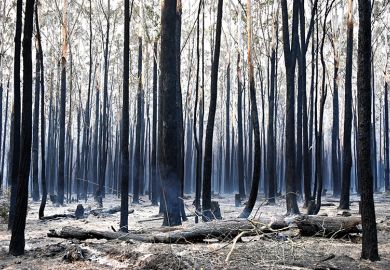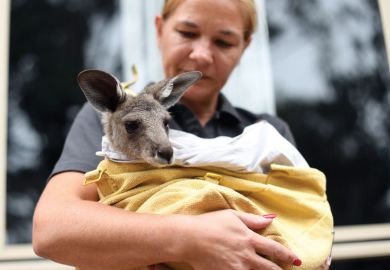Five months after Australia’s government drained a A$3.98 billion (£1.95 billion) higher education infrastructure fund to release cash for natural disaster victims, none of the money has been distributed.
Canberra is yet to disburse any grants from the Emergency Response Fund (ERF), established in December with leftover money from the Education Investment Fund (EIF).
The government battled for five years to close the EIF, and finally succeeded by promising to divert its balance into disaster recovery. Detailing plans for the ERF last September, emergency management minister David Littleproud said that it would be in place by summer, “making sure we’re better prepared to face extreme events”.
Finance minister Mathias Cormann said that the ERF would provide an “additional source of sustainable funding” following natural disasters. He said that the government would access the fund “when there is a need for additional support following a natural disaster that has had a significant or catastrophic impact”.
The government has not yet determined such a need, despite the unprecedented summer bushfires that razed well over 100,000 square kilometres of Australia, destroying almost 3,000 homes and killing 33 people and an estimated 2 billion native animals.
The ERF is designed to disburse A$150 million a year to fund emergency response and recovery, and another A$50 million to build long-term community sustainability. Academic research appears to qualify for grants under the latter stream.
Fundable activities include “tools to better understand local climate variability” and “advice on climate risk…for future land-use planning”, a government spokeswoman said.
But she said that money from the fund would not be allocated until A$2 billion given to the National Bushfire Recovery Agency, which the government established in January, had been fully committed.
The national agency is primarily focused on distributing short-term payments to bushfire-affected residents and businesses. It also supports ecological recovery through things like wildlife rescue and revegetation, and has set aside A$25 million for emergency interventions to boost wildlife’s “immediate survival”.
The Department of Agriculture, Water and the Environment, which administers this funding stream, said that academic researchers “may” qualify for grants.
The ERF’s slow start will be a double blow to a university sector that campaigned against the EIF’s closure, and now cannot turn to its replacement to finance urgently needed research.
Academics stress an immediate need to evaluate the bushfire impacts on ecosystems and drinking water catchments, with the window of opportunity for this research rapidly fading. Obtaining funding through the Australian Research Council takes at least six months.
Victoria University bushfire researcher Celeste Young said that funding systems needed to be able to cater to immediate as well as longer-term research needs, so that experts could “get in directly after the fires” and collect data.
She said that ecological monitoring was particularly urgent and socially focused research was also vital: “To put it bluntly, it’s going to cost the government more if communities don’t have water they can drink.”
Ms Young said that the Bushfire and Natural Hazard Cooperative Research Centre had a “response fund” to support rapid post-disaster studies. But funding for the centre itself expires in 15 months.
Science minister Karen Andrews said that the government was considering ways of enabling the centre’s work to continue, while declining to outline the funding sources being investigated. “The government remains strongly committed to investing in long-term research into bushfire and other natural hazards,” she said.
Register to continue
Why register?
- Registration is free and only takes a moment
- Once registered, you can read 3 articles a month
- Sign up for our newsletter
Subscribe
Or subscribe for unlimited access to:
- Unlimited access to news, views, insights & reviews
- Digital editions
- Digital access to THE’s university and college rankings analysis
Already registered or a current subscriber?








